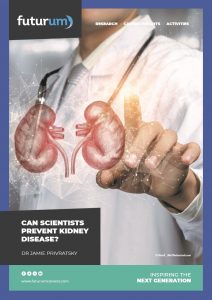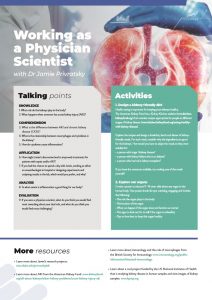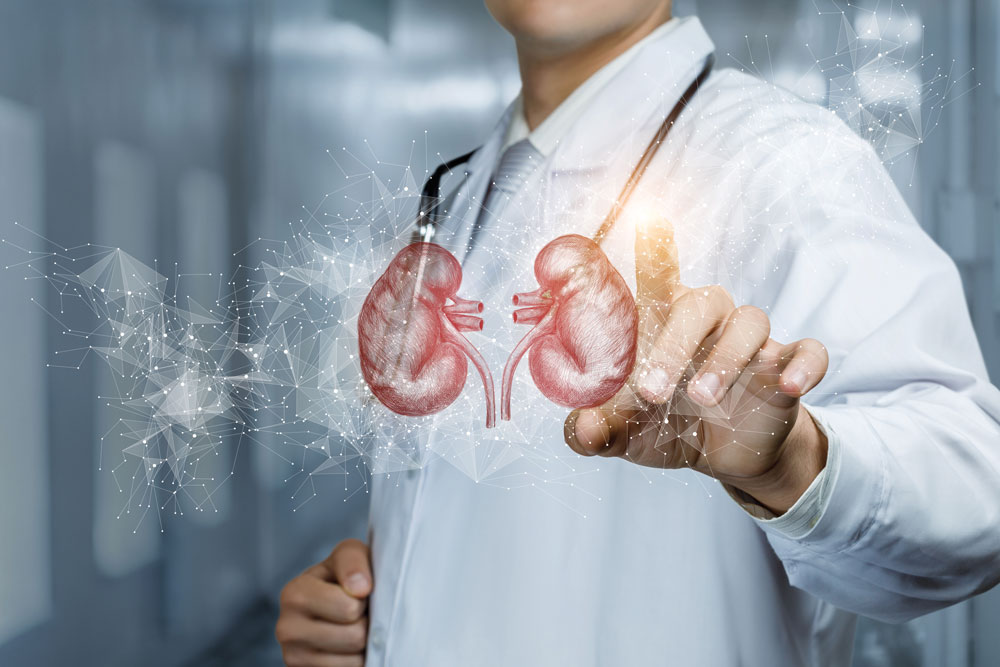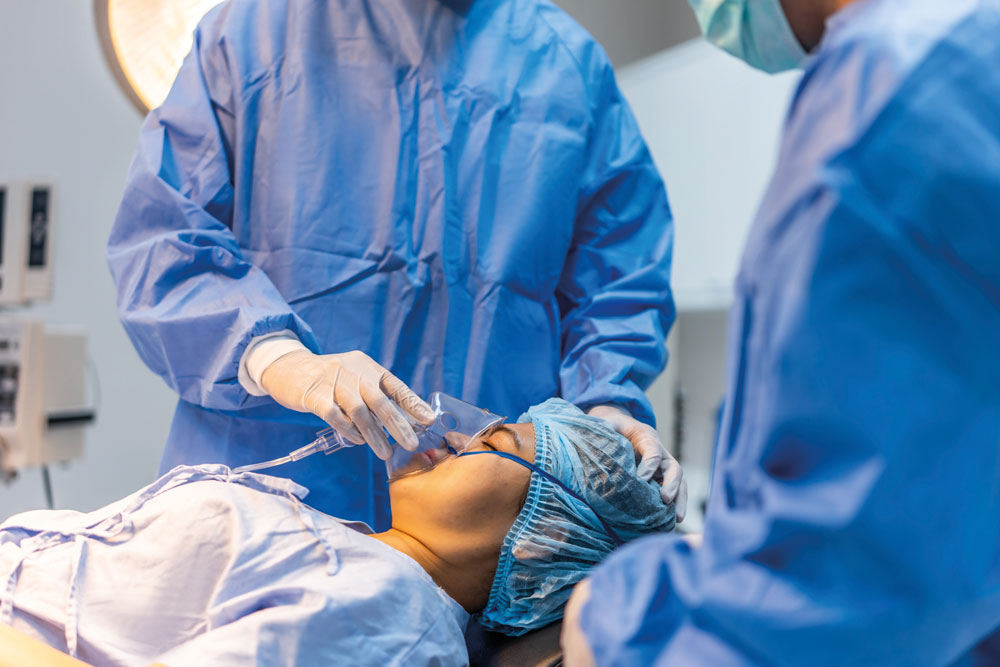Can scientists prevent kidney disease?
At Duke University Medical Center in the US, Dr Jamie Privratsky divides his time between treating critically ill patients on the hospital wards and uncovering the biological causes of their conditions. In his most recent research project, Jamie has been using mouse models to shed light on the mechanisms behind acute kidney injury (AKI), a serious problem that can occur in the organ that makes urine and manages fluid and blood pressure, and to determine how to prevent AKI progressing to chronic kidney disease.
TALK LIKE A PHYSICIAN SCIENTIST
Cytokine — a small protein that plays a role in cellular signalling
Dialysis — a medical treatment in which the blood is artificially filtered by a machine when the kidneys have failed and cannot filter the blood
Endothelial cell — a cell lining a blood vessel
Inflammation — the immune system’s response to harmful stimuli
Macrophage — a type of immune cell
Pathogen — any organism that can cause disease
Sepsis — the immune system’s extreme reaction to an infection
“Acute kidney injury (AKI) occurs in up to 50% of critically ill patients,” says Dr Jamie Privratsky, a physician scientist at Duke University Medical Center. In his dual role as a physician scientist, Jamie not only treats patients with AKI, but is also conducting research to uncover the molecular causes of the disease.
What is acute kidney injury (AKI)?
Our kidneys play a crucial role in our body. They filter half a cup of blood every minute, removing waste products and any extra fluid from our body by producing urine. AKI occurs when kidneys cannot perform their normal functions, causing waste products to build up in the blood, which can then cause problems for other organs such as the brain, heart and lungs. “AKI can lead to the need for dialysis, the injury of other organs and death,” says Jamie.
AKI can occur if the kidneys are damaged, for example by a severe infection or traumatic accident, and blood flow to the kidneys is restricted. This means AKI is a common problem among people who are in an intensive care unit in a hospital. If AKI is limited or prevented early enough, kidney function can be restored. If not, the kidneys can become irreversibly damaged, resulting in chronic kidney disease (CKD). CKD and its end result, end-stage renal disease (ESRD), can be fatal unless the patient receives a kidney transplant or regularly undergoes dialysis for the rest of their life.
In critically ill patients, sepsis is the most common cause of AKI. Sepsis occurs when the immune system overreacts to an infection, damaging the body’s tissues and organs. It can be extremely serious and life-threatening. “When AKI occurs as a complication of sepsis, the mortality rate climbs to greater than 50%,” says Jamie. “Despite this, the processes of septic AKI are still poorly understood.” He therefore hopes to increase understanding of AKI to improve the outcomes for patients.
What role do macrophages play?
Jamie’s research involves studying macrophages, important cells in the immune system. Macrophages are specialised cells that detect harmful organisms in our bodies. They circulate in almost every tissue, searching for pathogens and removing dead cells. “Macrophages can have protective or detrimental effects on kidney injury, depending on their location within the kidney, the disease causing the injury, and the length of time after injury,” says Jamie. During septic AKI, macrophages have been shown to be protective, but scientists do not understand which macrophages have these protective effects.
Reference
https://doi.org/10.33424/FUTURUM389
Jamie treats patients with acute kidney injury and investigates the molecular causes of the disease © Natali _ Mis/Shutterstock.com
Jamie also works as an anaesthesiologist, where he is responsible for keeping patients safe while unconscious during surgery © Hananeko_Studio/ Shutterstock.com
Macrophages release cytokines, small protein molecules that help with communication between cells during immune responses, by signalling to other immune cells to cause inflammation. Like macrophages, cytokines play a vital role in helping the body fight disease. “Inflammation is needed for healing, but in kidney injury, it can also cause damage,” explains Jamie. “The key is to regulate the immune response so the cells cause inflammation without inducing significant injury.”
How is Jamie studying AKI?
Jamie is using mouse models and human studies to investigate macrophages and cytokines in the kidneys during septic AKI. “In mouse kidneys, macrophages consist of two main subpopulations, F4/80hi macrophages and CD11bhi macrophages,” he says. Jamie is focused on F4/80hi macrophages, as these seem to be important in the kidney, but scientists do not yet understand why.
Two major cytokines released during sepsis are interleukin-6 (IL-6) and interleukin-1 (IL-1). “IL-6 is a major proinflammatory cytokine that is released at sites of injury and following sepsis,” says Jamie. “IL-1 is known to induce IL-6 and, inversely, anti-IL-1 therapy can limit IL-6 generation.” Jamie discovered that IL-6 levels were higher in subjects who have both severe sepsis and AKI, implicating IL-6 as a possible mediator of septic AKI. He decided to see if limiting the amount of IL-6 in the body would reduce the severity of AKI.
How did Jamie create mouse models?
“To study this, we used a genetic mouse model that specifically depletes F4/80hi macrophages,” says Jamie. These mice had their genes engineered to express a receptor for the diphtheria toxin receptor. In humans, diphtheria is a serious infection, so we get vaccinated against it, however mice are completely unharmed by diphtheria and its toxin. “We use this to our advantage by expressing the receptor in specific cells in the mice, in this case in the F4/80hi macrophages,” Jamie explains. “By giving these mice the diphtheria toxin, their F4/80hi macrophages are deleted.”
Jamie and his research team then infected mice that were missing F4/80hi macrophages to induce sepsis, to determine what level of kidney injury they developed as a result. They observed the mice’s kidneys under the microscope to analyse the immune cells they contained and measured markers of kidney injury in the blood.
What has Jamie discovered?
Jamie and his team found that F4/80hi macrophages produce an inhibitor of IL-1, known as IL-1 receptor antagonist, which represses IL-6 production in kidney endothelial cells. They further found that limiting IL-6 appears to decrease inflammation and the severity of AKI. “F4/80hi macrophages clearly play prominent but complex roles in kidney disease,” Jamie adds. “Our study provides a rationale to target macrophage–endothelial cell interactions to protect the kidney during sepsis.”
What next?
Jamie’s next steps will be to look for ways that his research can improve therapies for people with AKI and prevent its transition to CKD. “While inhibitors of both IL-1 and IL-6 have been tried in patients with sepsis, these drugs have not always worked well due to other side effects, such as the fact that they supress the immune system,” he explains. Jamie hopes his research leads to more targeting of these treatment options, to limit side effects and improve the outcomes for people with kidney injury.
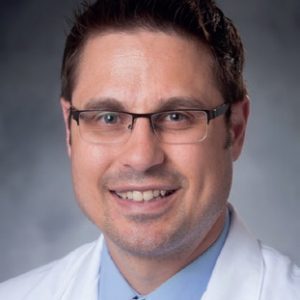 Dr Jamie Privratsky
Dr Jamie Privratsky
Associate Professor of Anesthesiology, Duke University Medical Center, USA
Fields of research: Nephrology, Critical Care Medicine
Research project: Investigating the mechanisms behind acute kidney injury (AKI)
Funders: US National Institutes of Health (NIH): National Institute of Diabetes and Digestive and Kidney Diseases (NIDDK), National Institute of General Medical Sciences (NIGMS); International Anesthesia Research Society; Duke Department of Anesthesiology
About physician scientists
By working both as medical doctors and research scientists, physician scientists are a crucial bridge between medicine and science. They represent less than 2% of physicians, yet they have contributed so much to our knowledge of medicine and ability to provide healthcare. Historical achievements of physician scientists include the polio vaccine (which has improved the lives of millions of children), reductions in coronary artery disease, treatments for patients with failing organs, and pioneering steps towards the eradication of smallpox. In fact, more than half of the Nobel prizes in medicine and physiology have been awarded to physicians working in scientific research.
Their in-depth clinical knowledge as doctors, combined with their skills in scientific investigation, make physician scientists incredibly useful and important. By working with patients as well as conducting research, they are uniquely placed to recognise the challenges in medicine, discover the underlying biological mechanisms behind health conditions and test new therapies to prevent and treat diseases.
What does Jamie’s job as a physician scientist involve?
Alongside studying kidneys in a scientific lab, Jamie also works as an anaesthesiologist and intensive care doctor. “As an anaesthesiologist, I anesthetise patients (make them unconscious) for surgery,” explains Jamie. This involves inserting intravenous (IV) drips so the anaesthesia drugs can be released directly into their blood, inserting breathing tubes in their throats so they can still breathe while unconscious, and closely monitoring their condition throughout the surgery to ensure they are safe. “When I work in the intensive care unit, I am looking after the sickest patients in the hospital,” Jamie says. “I make the medical decisions that will hopefully get them through their severe illness.” In contrast, a typical research day for Jamie involves conducting experiments in the lab, analysing data, writing up results and applying for research funding. “I love being in the lab because I get to learn about science and design experiments to test our hypotheses,” he says.
What are the joys and challenges of this dual role?
“The hardest thing about having a dual role is that both jobs are very challenging, and I have to do well in both of them,” says Jamie. Despite these challenges, many people are drawn towards a career as a physician scientist due to the variety and satisfaction of the work. “Being a researcher involves many days where experiments do not work, so some days I can feel like I didn’t accomplish anything,” says Jamie. “It is therefore very rewarding to go into the hospital where I can help people directly. On the other hand, clinical work can be overwhelming and tedious, so it is nice to have a change of pace by working in the lab to design experiments and analyse data. Being a physician scientist means I get the best of both worlds!”
Pathway from school to physician scientist
• Studying biology, chemistry and physics at school and post-16 will be useful for becoming a physician scientist and may be a requirement for getting into medical school.
• “Physician scientists also need to be good at writing and presenting their work, so taking writing and English classes is also useful,” says Jamie.
• Physician scientists are medical doctors as well as research scientists, so you will need to complete a medical degree to qualify as a medical doctor.
• Typical degrees to study before attending medical school include biology, biochemistry and biomedical science. “I majored in clinical laboratory science,” says Jamie. “This gave me a strong background in science and medicine.”
• Some universities offer dual degrees specifically for physician scientists, which combine a degree in medicine with a PhD. The Association of American Medical Colleges has a useful webpage about dual degrees: students-residents.aamc.org/applying-medical-school/considering-combined-degree-md-phd-md-mba-md-mph-md-jd
Explore careers as a physician scientist
• “Physician scientists need to be naturally curious, be good at taking in a lot of information, enjoy working with and helping people, and want to understand how things work at a deep level,” says Jamie. “As well as that, you need to have a strong work ethic and a love of science and medicine.”
• To pursue a career as a physician scientist, Jamie recommends exploring the resources from the American Physician Scientist Association (www.physicianscientists.org) and the American Society of Clinical Investigation (www.the-asci.org).
• This article, by Dr Karuna Ganesh, explains the joys and challenges of being a physician scientist: www.nature.com/articles/s41575-021-00443-3
• This article, by Dr David Schwartz, explains the importance of physician scientists for bridging the gap between medicine and science: www.atsjournals.org/doi/full/10.1164/rccm.201110-1806ED
Meet Jamie
I have wanted to be a doctor since early high school. I always enjoyed science, I was pretty good at math and I really just enjoyed learning. I still wanted to understand things even when I was studying subjects that weren’t my favourite.
Despite my early interest in medicine, I didn’t consider a career as a physician scientist until later. My interest in research didn’t start until I did research in college. After that, I realised that research would help fulfil the intellectual curiosity I had. I also knew that being a physician would give me a great understanding of human health and disease. It helped that, in the US, there are programmes that pay for your medical school tuition if you do a dual degree and graduate with both a PhD and a medical degree. As I enjoyed both medicine and research, this seemed like a great option.
My favourite fact about the kidneys is that they coordinate many of the physiological processes in the body. For example, the kidneys are responsible for maintaining blood pressure, blood volume, electrolytes, acids and bases in the body. They truly do it all!
I enjoy spending my free time with my family, especially going skiing or to the beach. My wife and I are foodies, so we enjoy eating out and trying new foods. I also love watching sports, playing golf and helping with activities at my church.
Jamie’s top tips
1. Follow your passion and go for it. Do what you love, and it will never feel like work! I love my job and can’t imagine doing anything else.
2. Work hard at whatever you do.
3. Make sure you have a good support system around you and value your family and friends above your work.
Do you have a question for Jamie?
Write it in the comments box below and Jamie will get back to you. (Remember, researchers are very busy people, so you may have to wait a few days.)

